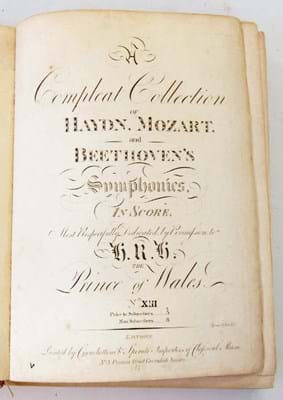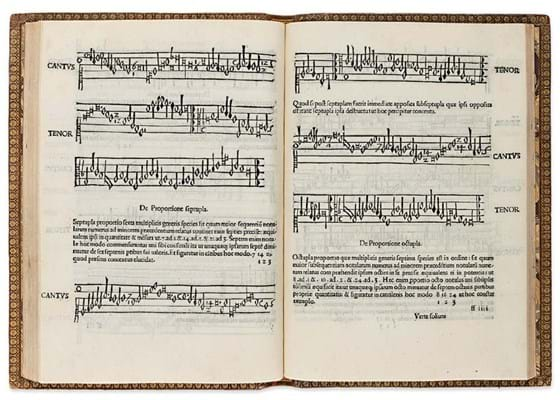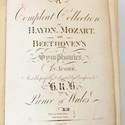Bits of Beethoven
These sections of The Compleat Collection of Haydn, Mozart and Beethoven’s Symphonies in Score… carried an estimate of just £30-50 but sold for £1050.
Trying to work out what might have appealed to bidders, I found a reference to a lot offering Pts XXV-XXVII of this same work that in 2012 had brought a bid of £3200 at Sotheby’s.
Those parts presented Beethoven’s first three symphonies, No 3 being the Eroica*, and the lot notes explained that these small quarto English orchestral scores, derived from the printed parts, predated the German editions by some 14 years.
Fortunately, the Cotswold lot was still in Cheltenham when I called and closer examination showed that what it contained were scores for the young Mozart’s first six symphonies.
They date from the years 1764-67, though there is some doubt as to the authenticity of Nos 2&3, the former having also been attributed his father, Leopold, and No 3 given to Carl Friedrich Abel.
* Last year, BBC Music Magazine conducted a poll of 151 leading conductors, asking them to vote for the greatest symphonies of all time. The ‘Top 20’ that emerged included five of Beethoven’s nine symphonies, and No 3 was No 1.
Renaissance inspiration
A WORK that was widely circulated, often referred to by other writers on music and, says Forum Auctions, was “plagiarised by most theorists of the following centuries”,
Franchinus Gafurius’ Practica Musicae is understandably considered the most influential music treatise of the Renaissance.
The work was first published in Milan in 1496 and a second edition was issued in Brescia by Angelus Britannicus in the following year. It was an example of the latter, a close reprint using the same woodcut diagrams of musical notation that is actually scarcer than the Milan first, which sold for £20,000 in the Forum sale of January 25.
Gafurius was choirmaster at Milan’s great cathedral and his work illustrates all aspects of musical theory and practice, including chant, polyphony and the rules of counterpoint.
In a late 19th century binding of brown calf gilt, this copy had seen a few shoulder notes or diagrams very slightly shaved when some leaves were trimmed during that or an earlier binding process.
There was also some contemporary marginalia, as well as a lengthy musical example (without text) added in ink to the lower margins of the last two leaves.
This was yet another lot that had once formed part of Cornelius J Hauk’s great History of the Book collection, sold in 2006 at Christie’s New York, and mentioned in last week’s reports. In that auction it made $26,000 (then £14,300).
More on early printed and manuscript lots in the Forum sale soon.












